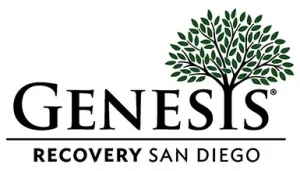Opium has been used as a pain reliever for centuries. The ancient Greeks, Romans, Egyptians, and Persians are all known to have used it medicinally and, most likely, recreationally. It is questioned whether or not people in those times knew how addictive it was, although as far back as Alexander the Great and Aristotle there are written records containing knowledge of alcoholic dangers. Ancient cultures lacked our modern scientific understanding of addiction and it is unclear how available opium was in those days so it’s difficult to know how much of a problem opium abuse was. Despite that, I think that it is probably safe to say if people back then were aware of the dangers of alcohol then they were able to recognize problems with excessive opium use. Although there was this lack of understanding of the more specific causes of opium addiction, behavioral and circumstantial observations of people suffering from it would be enough to allow the observers to identify the substance as the source of the trouble.
The proliferation of cheap heroin, the rise of the drug cartels, and overdoses linked to ever-stronger opioid pharmaceuticals like fentanyl have made the opioid epidemic a global concern but this is hardly the first time opiates and other drugs have been a major societal problem in countries across the world.
- In the 1800s a tincture made from alcohol and opium called laudanum became widely available to the public. It was touted as a cure-all and used for pain relief, diarrhea, insomnia, seizures, as a cough suppressant, and a host of other ailments. Laudanum could be bought without a prescription at pubs, groceries, and pharmacies and was often cheaper than alcohol. As with any opiate, it was highly addictive and that, combined with all the other factors, caused laudanum abuse to quickly become a widespread problem.
- Morphine was discovered in 1804 and because it was stronger than opium and required a lower dosage, it was theorized that it would be less addictive. It was made available to the public in 1817 and was used extensively during the civil war. An estimated 400,000 soldiers became addicted as a result. It is also worth noting that the discoverer of morphine, Friedrich Serturner, became addicted to the drug himself and later warned about its hazardous effects.
- In 1895, the Bayer Company began marketing an even stronger opiate that was purportedly a “non-addictive morphine substitute” known as heroin. Believe it or not, it was sold as a cough syrup.
It was not just opioid medications that were a problem. During the same time period what was known as patent medicines were all the rage. These were hawked as miracle cures for myriad ailments but the manufacturers did not have to disclose everything that was in them. Do a quick Google search on the term and you can see images of labels advertising things like Wizard Oil, Snake Oil, and Brain Salt. Beyond dubious ingredients making patent medicines dangerous, many of them used extremely addictive substances. Cocaine toothache drops. Chloral hydrate “knock-out drops”. The good people at Bayer, in addition to heroin, also gave us Barbital, the first commercially available barbiturate; another extremely addictive class of drugs.
We don’t have much in the way of in-depth addiction statistics from the 19th century like the ones we have today but literature and media publications from that time period help to paint a picture of what the drug problem was like. Thomas DeQuincey’s “Confessions of an English Opium-Eater” was published in 1821 and is an illuminating personal account of the author’s laudanum addiction. I would recommend it to anyone interested in the subject. The best indicator of the severity of the drug epidemic back then are the pieces of legislation passed in the early 20th century. The 1906 Food and Drug Act and the 1914 Harrison Act imposed strict regulations and registration requirements on patent medicines. In 1908 president Theodore Roosevelt even appointed an Opium Commissioner to help combat the problem. Heroin was made illegal outright in 1924.
Unfortunately, we don’t seem to be learning from our mistakes. Back then it was opium, codeine, morphine, and heroin. Now we have Oxycontin, Dilaudid, Opana, Fentanyl, and Carfentanil. Barbiturates were once the preferred sedative and anxiolytic medications. Quaaludes were first marketed in the 1950s but manufacturing was eventually discontinued in the 1980s because of the number of people abusing them and becoming addicted. During the 1970s benzodiazepines became the go-to for anxiety: Valium, Klonopin, Ativan, and Xanax. They are viewed as safer and more effective than barbiturates but are a huge part of the drug epidemic today and are extremely addictive themselves. People can have seizures and even die when they stop taking them. I had a prescription for Klonopin for seven years and when I first entered recovery, the withdrawal was miserable. My anxiety was through the roof. I sweated profusely. I had muscle tremors for a month and my hands shook so much that I couldn’t write with a pen and could barely hold a plate of food.
Granted, back in the day when cocaine and opium were first discovered and introduced into the marketplace there was much that we didn’t know. It takes time and a lot of case examples to learn the full extent of a drug’s short-term and long-term side effects. With all the maladies and diseases that people can be afflicted by, the promise and potential of new drugs to treat them is exciting and gives people hope. But this has to be balanced with responsibility on the part of the drug manufacturers. Addiction as a side effect of using cocaine toothache drops is not a fair tradeoff for relieving some tooth pain. The difference between the drug epidemics of the past and the one we find ourselves in today is that now we have a lot of experience to draw from and a great deal more knowledge about how drugs and addiction work. Pharmaceutical companies can’t hide behind a curtain of ignorance. We know that treating opioid addiction with another opioid doesn’t work. Drugs like buprenorphine are having some promising results but I am skeptical. Using addictive drugs to treat drug addiction has a poor track record.
The biggest problem is money. Pharmaceuticals are a huge business and there is a lot of money to be made. There’s a conflict of interest there. Pharmaceutical company executives should not be allowed to be a part of FDA boards that approve drugs. Doctors should not get paid for prescribing certain medications. Caution and responsibility for the welfare of the public are difficult to practice when these things are going on. Some of these companies today are just bigger, more modern versions of the snake oil salesmen of the 19th century. Purdue is the company that came out with Oxycontin. Type in those two words in a YouTube search and you can watch commercials where doctors talk about the wonders of this supposedly safe, non-addictive opioid. There are also videos of people telling the stories of how their lives were ruined by addiction to the drug. Thankfully Purdue is finally being held accountable for its deceptive marketing and the company currently has hundreds of lawsuits against it by states, cities, and individuals. In another blog, I take a deeper look into how Purdue has contributed to the ongoing opioid epidemic.
So even though we’ve made great strides in medical science and increased our understanding of addiction and how drugs work, we’re facing the same problems that we did over one hundred years ago. The landscape and scope of the issue have changed but the nature of it hasn’t. People like to party. People want things that make them feel good when they feel bad. There’s a demand for drugs and where there’s a demand for anything there will be people willing to fill that demand. The more money there is to be made, the further the lengths people will go to make it.
Yes, there are medical conditions that require pharmaceutical treatment but where do we draw the line? Drugs will continue to become more potent but how strong do they need to be? When will a drug’s lethality and potential for abuse outweigh its benefits? Hopefully, the severity of the current drug crisis will initiate some real and effective change in our approach to treating whatever it is that ails us. If it doesn’t, history will continue to repeat itself.

